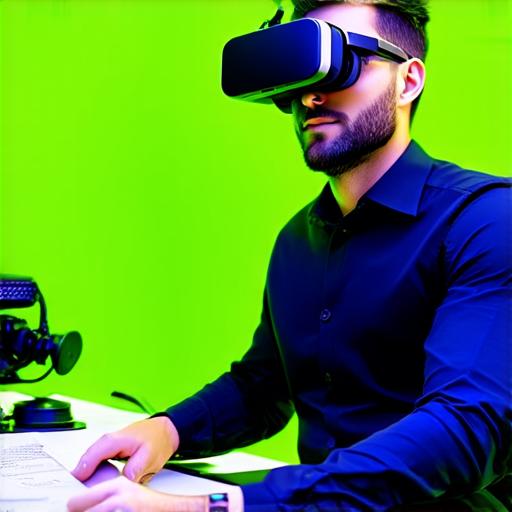
Virtual reality (VR) is a technology that has been around for over 60 years.
Since its inception, VR has evolved significantly, with various inventors and companies claiming ownership of the technology. This article will explore the history of virtual reality, who holds the patent for inventing it, and what impact this technology has had on our world.
Early Beginnings of Virtual Reality
The concept of virtual reality can be traced back to 1962 when Ivan Sutherland developed “Skywriter,” a computer program that allowed users to draw letters in the sky using a light pen. This technology was considered the first form of VR, as it created an immersive environment for the user to interact with.
In 1968, William Higinbotham invented the first VR headset called “Head Mounted Display,” which was used for military training simulations. This device allowed soldiers to experience a simulated battlefield in a virtual world.
Virtual Reality and the 1990s
The 1990s saw significant advancements in VR technology, with companies like Silicon Graphics (SGI) and 3dfx developing specialized graphics cards for VR systems. In 1992, SGI introduced the first consumer-grade VR headset called “Cyberspace,” which was designed for gaming and entertainment purposes.
One of the most influential figures in the development of VR during this time was Jaron Lanier, who coined the term “virtual reality” in 1984. Lanier went on to found VPL Research, a company that developed early VR systems, including the first VR headset called “The Aspen.”
Virtual Reality and the 2000s
The turn of the millennium saw continued advancements in VR technology, with companies like Sony, Nintendo, and Microsoft entering the market. In 1999, Sony launched the PlayStation 2, which included a built-in VR system called “EyeToy.” This device used a webcam to track the user’s movements and provide a virtual reality experience.
Nintendo also entered the VR market in 2004 with the release of the Wii, which included motion sensors that allowed users to control games using their body movements. The launch of these systems marked a significant shift in the way people experienced virtual reality.
Who Holds the Patent for Inventing Virtual Reality?
The question of who holds the patent for inventing virtual reality is a complex one, with various inventors and companies claiming ownership over different aspects of the technology. However, there are a few key figures who have made significant contributions to the development of VR and hold patents for their inventions.
Ivan Sutherland is widely considered the father of virtual reality, having developed “Skywriter” in 1962. He also holds several patents related to VR technology, including a patent for a stereoscopic display system that can be used in VR headsets.
William Higinbotham, who invented the first VR headset in 1968, also holds patents related to his work on military training simulations. His inventions paved the way for future developments in VR technology.
Jaron Lanier, who coined the term “virtual reality” in 1984, has made significant contributions to the development of VR systems and holds several patents related to his work.
Impact of Virtual Reality on Our World
Virtual reality technology has had a profound impact on our world, with applications ranging from entertainment to medicine and education. VR has been used in the gaming industry to create immersive experiences for players, and it has also been used in training simulations for military personnel and first responders.
In healthcare, VR has been used to treat phobias, pain management, and post-traumatic stress disorder (PTSD). For example, a study published in the Journal of Medical Internet Research found that VR exposure therapy was effective in reducing symptoms of PTSD in veterans.
Virtual reality has also been used in education to create interactive and engaging learning experiences. For example, students can use VR technology to virtually explore historical sites or to learn about science concepts in a more immersive way.
Future of Virtual Reality
The future of virtual reality is bright, with advancements in technology making it possible for even more immersive and realistic experiences. One area where VR is expected to have a significant impact is in the field of augmented reality (AR), which combines virtual elements with the real world.
AR has already been used in industries like retail, where customers can try on clothes virtually using their smartphones. It is also being explored for use in education and training, as well as in entertainment and gaming.
Conclusion
Virtual reality technology has come a long way since its inception in the 1960s, with various inventors and companies contributing to its development. Ivan Sutherland, William Higinbotham, and Jaron Lanier are just a few of the key figures who have made significant contributions to the field of VR.
Virtual reality has had a profound impact on our world, with applications ranging from entertainment to medicine and education. As technology continues to advance, it is likely that we will see even more innovative uses for VR in the future.
